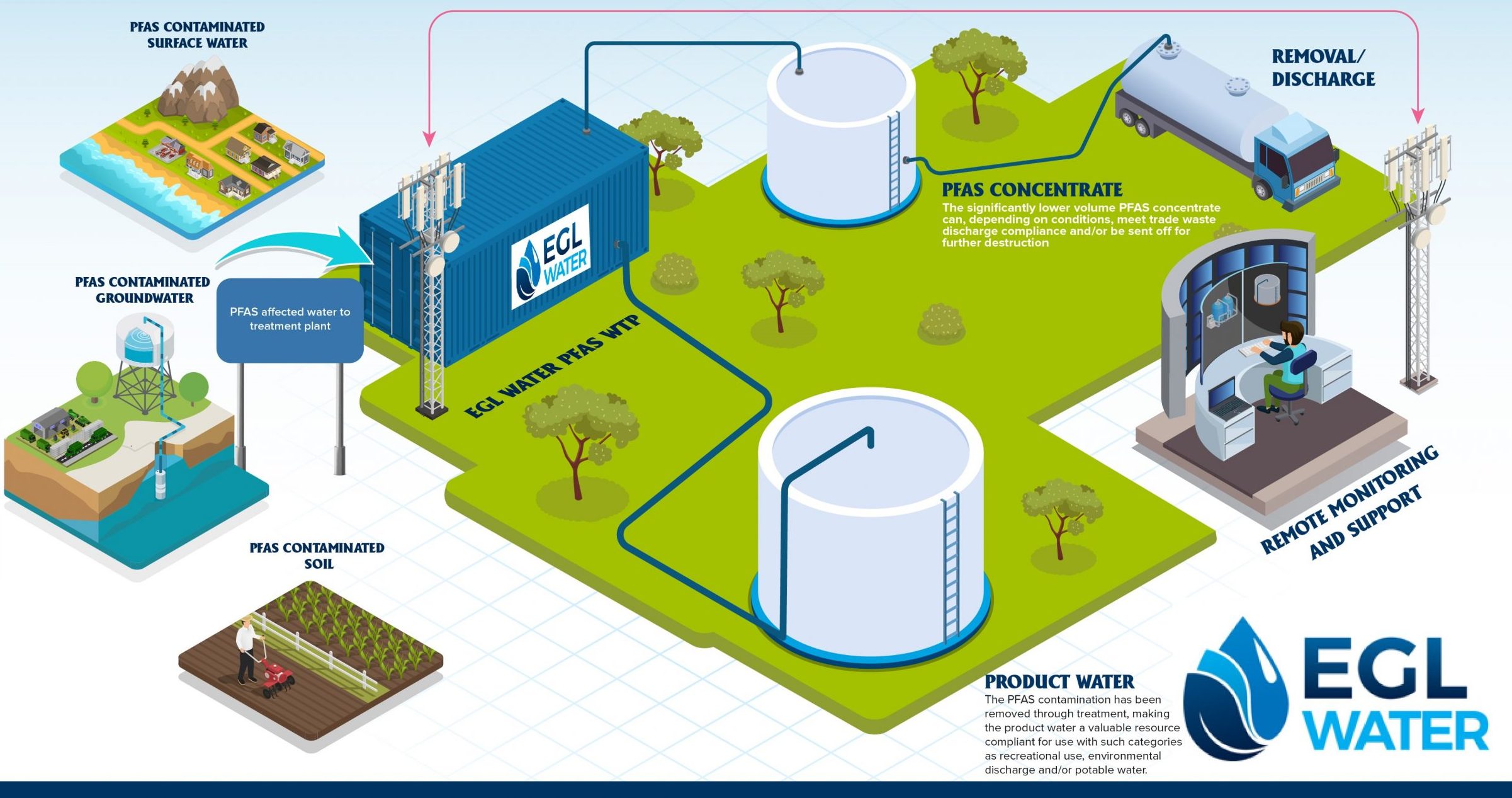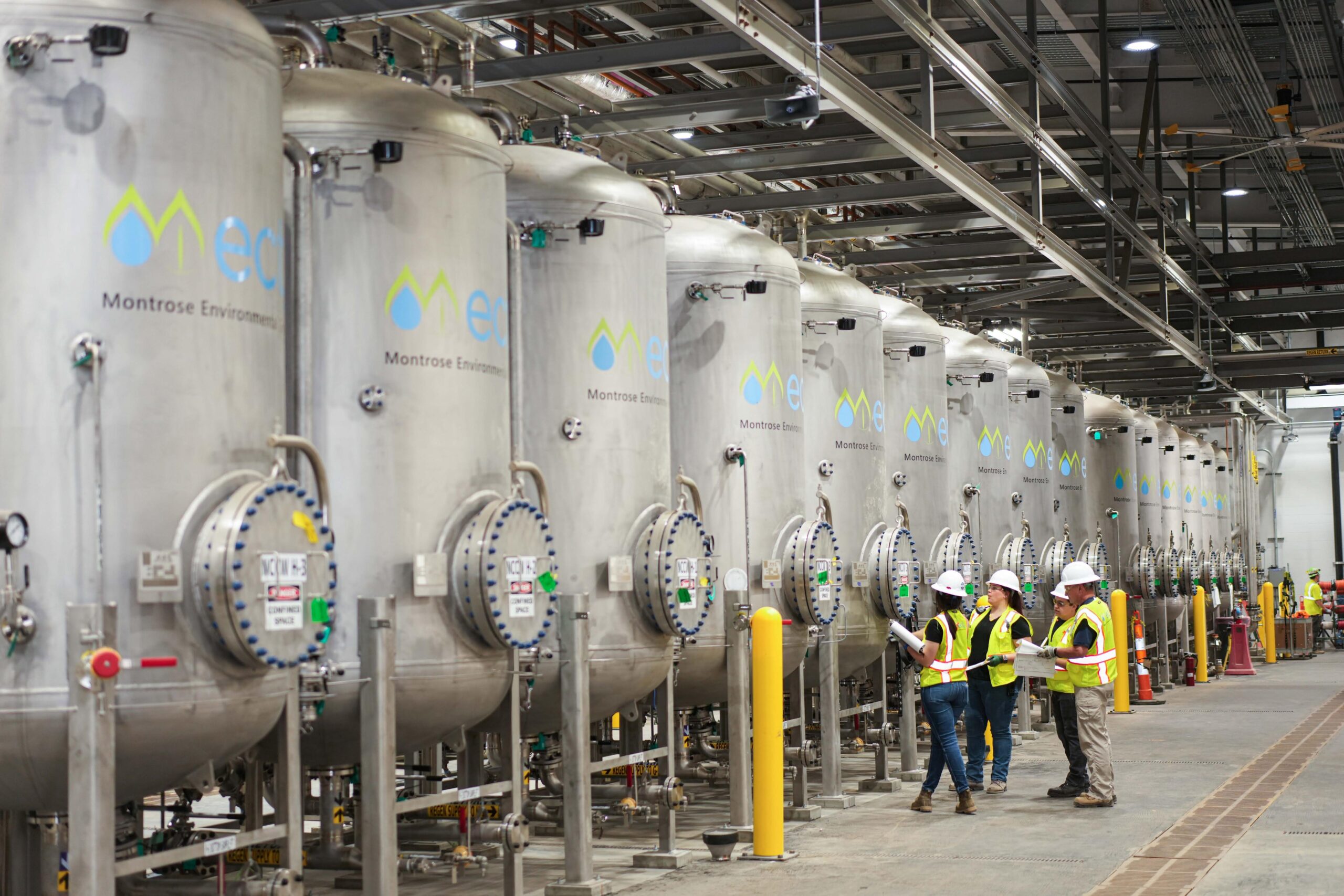How PFAS Treatment Reduces Environmental Impact and Improves Public Safety
How PFAS Treatment Reduces Environmental Impact and Improves Public Safety
Blog Article
Just How PFAS Therapy Guarantees Tidy and Sustainable Water
The visibility of PFAS, frequently referred to as "for life chemicals," presents considerable challenges to water high quality and public health. Advanced treatment innovations, including activated carbon adsorption and membrane layer filtering, have emerged as efficient remedies to reduce these contaminants. By using these techniques, neighborhoods can not just attain cleaner water but additionally foster sustainable methods that safeguard environments. The ramifications of these treatments expand past instant health advantages; they elevate essential questions concerning lasting water management strategies that have to be resolved to make sure a durable future. What does this mean for our strategy to water sustainability?

Understanding PFAS Contamination
PFAS, or per- and polyfluoroalkyl materials, have become a considerable environmental worry because of their widespread occurrence and persistence in the setting. These synthetic chemicals have been used in various commercial applications and customer products, including non-stick pots and pans, waterproof apparel, and food packaging, because of their special properties such as water and grease resistance.
The contamination of dirt and water sources by PFAS happens largely via commercial discharges, firefighting foam use, and seeping from landfills. pfas management. Once launched, these compounds are immune to deterioration, bring about their build-up in the environment. This perseverance elevates crucial concerns, as PFAS can take a trip cross countries via groundwater and surface water supply, influencing drinking water materials and ecosystems

Wellness Threats of PFAS
The persistence of PFAS in the environment elevates substantial wellness concerns for individuals subjected to these substances. Research study has actually linked PFAS direct exposure to different negative health and wellness impacts, including immune system dysfunction, liver damage, and enhanced danger of particular cancers cells.
The universality of PFAS in customer items, such as non-stick cookware, water-repellent fabrics, and food product packaging, more enhances the risk of exposure. Consuming water contaminated with PFAS is a considerable concern, as these chemicals can seep right into groundwater sources. At risk populaces, including youngsters and those living near industrial websites, may face intense threats as a result of their creating systems and potential for greater exposure levels.
As awareness of these health and wellness threats remains to expand, regulative agencies are beginning to establish standards for PFAS degrees in drinking water. Public health and wellness initiatives are necessary to reduce exposure and secure areas from the long-lasting impacts of these unsafe compounds.

Innovative Therapy Technologies
How can we properly tackle the challenges positioned by PFAS contamination in water sources? Innovative therapy technologies are emerging as vital remedies in the pursuit for tidy water. These approaches concentrate on the elimination or destruction of per- and polyfluoroalkyl compounds (PFAS), which are notorious for their determination in the environment.
One promising technique is adsorption making use of innovative materials, such as turned on carbon and ion exchange resins. These products have actually shown effectiveness in catching PFAS molecules from water. One more noteworthy technology is membrane filtration, which utilizes nanofiltration and turn around osmosis to separate pollutants at the molecular level, hence giving an obstacle against PFAS.
Furthermore, advanced oxidation procedures (AOPs) employ strong oxidants to break down PFAS substances right into harmless results. This method is specifically reliable for dealing with highly polluted water sources. Bioremediation techniques, employing particular microorganisms, are additionally being explored to degrade PFAS.
As research about his proceeds, crossbreed systems that incorporate multiple innovations might supply enhanced performance, dealing with the complexities of PFAS contamination. The development and execution of these ingenious treatment modern technologies are vital actions toward ensuring the security and sustainability of our water sources.
Benefits of Reliable PFAS Therapy
Successfully treating PFAS contamination in water resources substantially enhances public health and ecological safety and security. PFAS, typically described as "forever chemicals," are immune to destruction and can accumulate in the human body, leading to significant wellness risks such as cancer, liver damage, and body immune system dysfunction. By implementing reliable click this link therapy techniques, communities can reduce direct exposure to these hazardous compounds, ultimately improving the health and wellness results of their populations.
Additionally, successful PFAS therapy adds to the conservation of local environments. Polluted water can adversely impact water life and interfere with the delicate equilibrium of neighborhood environments. By making sure tidy water, treatment processes secure biodiversity and maintain ecological honesty.
Furthermore, efficient PFAS removal can foster public self-confidence in water quality. When communities are ensured that their drinking water is devoid of harmful impurities, it promotes a feeling of security and well-being. This trust is vital for neighborhood engagement and assistance for continuous water monitoring initiatives.
Future of Water Sustainability
In the middle of growing worries concerning water high quality and deficiency, the future of water sustainability depends upon cutting-edge methods and joint initiatives. As communities face the looming risks of impurities like PFAS, the growth of innovative treatment innovations is crucial. These modern technologies not just concentrate on the removal of harmful materials but likewise advertise the reuse and recycling of water, thus decreasing general demand.
Additionally, reliable water governance plays a critical role in making certain sustainable practices. Policymakers need to integrate clinical research study with governing structures to develop clear guidelines for water use and therapy. Stakeholder involvement, consisting of regional neighborhoods and sectors, cultivates a feeling of shared duty and encourages lasting practices throughout different industries.
Investment in infrastructure is also essential; updating aging systems to incorporate modern-day filtering and filtration techniques can substantially enhance water high quality. Additionally, accepting green modern technologies, such as all-natural filtering systems, can provide eco-friendly solutions.
Ultimately, the future of water sustainability depends on an alternative strategy that combines modern technology, policy, and neighborhood participation. By focusing on these aspects, we can safeguard our water sources for Learn More generations to find, making sure tidy and sustainable water for all.
Verdict
In conclusion, the efficient therapy of PFAS is necessary for making certain clean and sustainable water. Ultimately, robust PFAS therapy strategies contribute to long-term strength in water monitoring, promoting public trust in water quality and promoting sustainable techniques.
Report this page